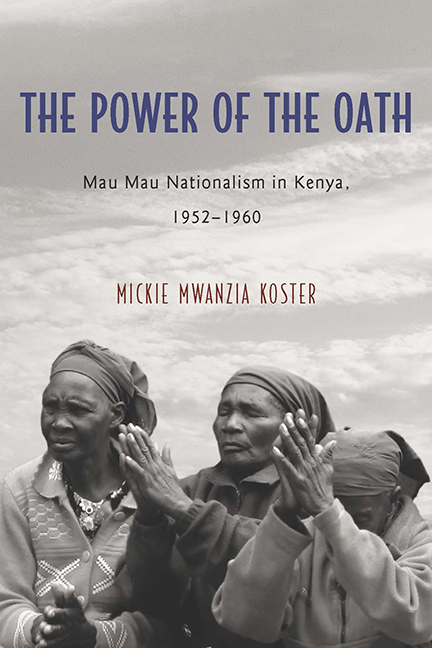Appendix A - Field Notes
Published online by Cambridge University Press: 07 May 2022
Summary
The bulk of all oral interviews, surveys, and reenactments occurred between late 2008 and spring 2009, and then the summers of 2011, 2012, 2014, and 2015. The fieldwork was accomplished through the hired services of Kenyan research assistants, M. Musyimi, E. K. Kioko, S. Kamau, F. M. Ndaka, and B. Kanyingi although all activities were also facilitated with the help of family, friend, and resources at the Kenyan National Archives. Through the assistance of Musyimi, Kioko, Ndaka, and Kanyingi interviewees were identified and scheduled and information was translated and documented. During this fieldwork, oral information was collected that spanned the districts and areas of Nairobi, Machakos, Kitui, Makueni, and Kangundo with most participants residing in the districts of Machakos, Kangundo, and Makueni. Later interviews were expanded to cover Kikuyu areas. During this period interviews were also conducted in other communities (Meru and Embu ethnic groups for comparison), although outside the scope of this focused study. The interviews and surveys included new questions that not only explored the roles of various groups but also considered the practice of oathing over time. The resulting research sources consisted of a database of interviews, detailed surveys, numerous photographs, and video images where permitted the fieldwork included three live ceremonies or reenactments that were recorded on video. One included a cleansing and purification/rainmaking ceremony to address the drought in the Kangundo District. The other two were reenactments. One was performed by the group, Wendo Wa Kavete in the Kibwezi District. The other cleansing reenactment was conducted by A. N. M. Matingo in the Machakos District. The performances and actual ceremony provided a great deal of material. It was clear that purification, like oathing, was a very complex topic. Their participation allowed for these reenactments to be shared with others, such as the Emerald Initiative Association, who could reflect on what the practices meant to them as well as validate the ceremonies based on their memories or stories.
In 2014 research was conducted to interview Mau Mau veterans in Nakuru with the help of research assistants F. Ndaka and B. Kanyingi. During this period, the research investigation was expanded to include the perspectives of freedom fighter on British reparations to Mau Mau veterans. And finally, in 2015 research was launched in Nakuru, Embu, and Meru to capture additional Mau Mau perspectives and memories for comparative analysis.
- Type
- Chapter
- Information
- The Power of the OathMau Mau Nationalism in Kenya, 1952–1960, pp. 157 - 160Publisher: Boydell & BrewerPrint publication year: 2016

